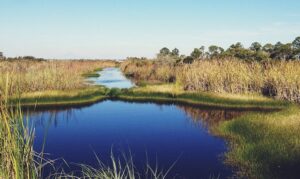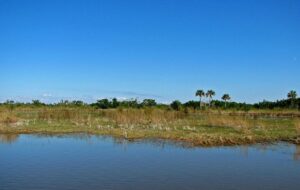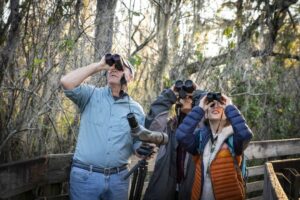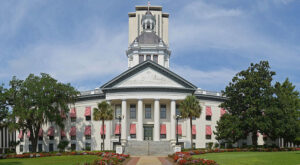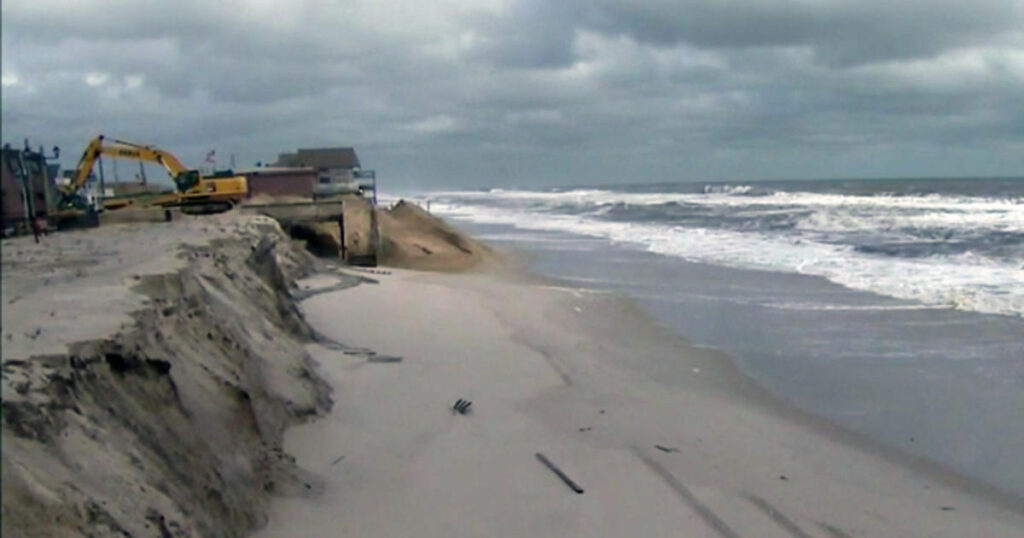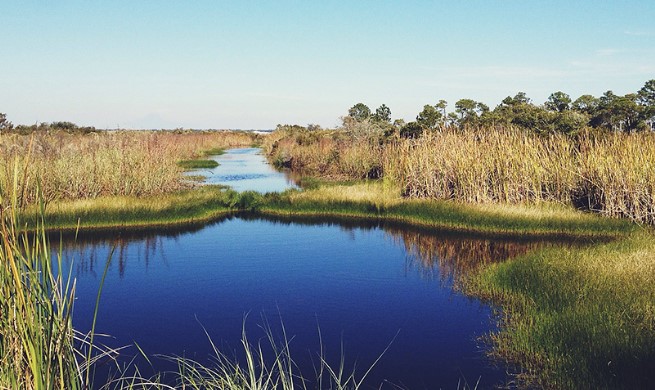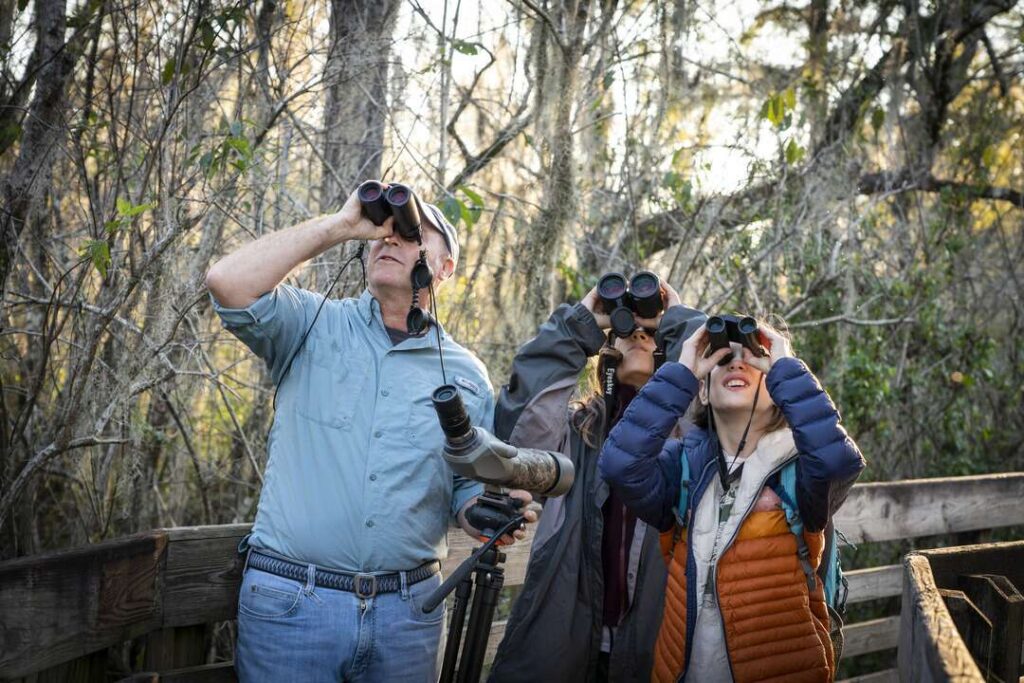
By GREG KNECHT
The Nature Conservancy in Florida (TNC) is working to tackle climate change and reverse species loss, in part by protecting lands within the Florida Wildlife Corridor. Whether it’s conserving and restoring rare habitat for wide-ranging species like the Florida black bear or protecting breeding and nesting grounds for migrating visitors like swallow-tailed kites, we know that when we protect land, we protect wildlife and make Florida more climate resilient.
Corridors require collaboration. Protecting land within the Florida Wildlife Corridor is a joint effort, and TNC in Florida continues to use our expertise in science and real estate to help identify vulnerable lands and connect partners and private landowners. We share science and data, allowing Florida to go farther, faster. We also collaborate with, advise and guide our partners on management practices and planning, because we know that acquisition is only one side of the conservation coin. To benefit wildlife, Florida must manage and restore the land we acquire.
Connected corridors of conservation and working lands not only ensure safe travel pathways for countless species, but also make land management practices easier and more effective. By closing gaps between conserved lands, we work in partnership to restore habitats with prescribed fire and invasive species removal, all benefiting Florida’s wildlife and ecosystems as a whole.
In our 50 years, TNC in Florida has helped conserve over 1.3M acres of vital and biodiverse lands. TNC’s Center for Conservation Initiatives (CCI) stewards three preserves in North and Central Florida, all located within the footprint of the Florida Wildlife Corridor. Disney Wilderness Preserve near Orlando Florida protects 11,000 acres of the greater Everglades Ecosystem, including one of the area’s last undeveloped lakefronts. Nearby at Tiger Creek Preserve, we protect nearly 5,000 acres of the Lake Wales Ridge: a one-of-a-kind Florida ecosystem that is home to unique species found nowhere else in the world. Apalachicola Bluffs and Ravines Preserve (ABRP) in North Florida is part of a 22,000-acre conservation hub along the upper portion of the Apalachicola River. This part of the Florida Wildlife Corridor is critical, connecting wildlife pathways from the Gulf of Mexico to the Apalachicola National Forest and nearby conserved lands.
Just last month, TNC and our partners announced the purchase and protection of the Cola River Land & Timber property that connects ABRP with the adjacent Torreya State Park. Cola River will support healthy habitats for wildlife, including the eastern indigo snakes that are released at ABRP through a ten-year, multi-partner species recovery effort. In our seventh year of the program, we recently celebrated a major milestone with the discovery of two eastern indigo snake hatchlings at ABRP. The hatchlings, offspring of adult snakes released at the property, are a major sign that reversing species loss is possible.
TNC in Florida also recently closed on a key conservation easement in the Florida panther dispersal zone: G Road Grove. Years in the making, we helped purchase this conservation easement with the U.S. Department of Agriculture’s Natural Resource Conservation Service. G Road Grove is a critical connector between other lands we’ve recently helped protect, including Chaparral Slough and Devil’s Garden. This working citrus grove and tree nursery provides the habitat and food sources Florida panthers need, connecting the secretive and territorial animals from the lands of the sprawling Okaloacoochee Slough State Forest to the southern banks of the Caloosahatchee River and onto to the natural and working lands north of the river. This acquisition—and the protection of the entire region—is only possible through creative partnerships that protect Florida’s farms and ranches from development.
This is our ‘now’ moment. We have years, not decades, to protect critical habitat linkages within our state. Florida continues to experience rising seas, higher temperatures and other climate change impacts. Along with ever-increasing development and population growth, our wildlife species are feeling the squeeze. In the next couple of years, the lands we save in the Florida Wildlife Corridor will provide climate resilience, offering habitat needed by countless native and migrating species and helping to protect Florida’s biodiversity. Now more than ever, it is critical to work in partnership to save the remaining lands of the Corridor, protecting wildlife now and for generations to come.
Greg Knecht is the Executive Director of The Nature Conservancy


